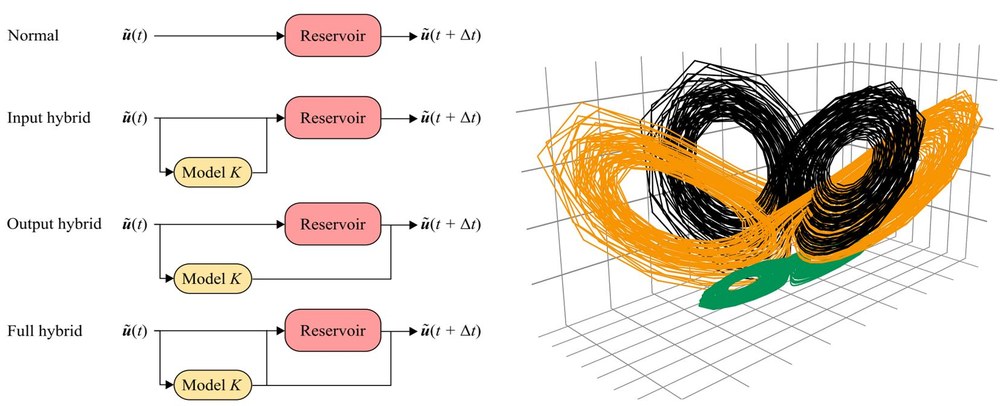Physics-informed AI methods for predicting complex systems.
In the Innovative Computational Methods research group, Dennis Duncan and Christoph Raeth at the Institute for AI Safety and Security are developing and optimising methods for hybrid reservoir computing. They combine data-driven and model-based predictions to better forecast complex physical-technical systems. These methods can be used, for example, to predict instabilities in turbines or frequency fluctuations in power grids.
Reservoir Computing (RC) is one of the most promising AI approaches for predicting complex systems. In its original form, RC is a purely data-driven method. Unlike e.g. sociological systems, physical-technical systems often provide at least approximate prior knowledge about the underlying model. In hybrid reservoir computing, this approximate knowledge about the model can now be incorporated into the prediction, thus extending the classical RC approach.
In the current work , different possible combinations (Fig. above/left: input hybrid, output hybrid, full hybrid) of the data-driven and model-based elements in hybrid RC were developed and tested for their goodness of fit. Using the chaotic model systems, it is shown that all hybrid approaches - no matter in which combination - significantly improve the prediction quality. The best results are achieved by combining data-driven and model-based predictions in the output layer of the recurrent neural network (output hybrid).
The prediction quality of the output hybrid combination is sometimes slightly better than the input hybrid and full hybrid approaches for very good models, but the prediction never falls below the level of the classic RC approach - unlike the other two hybrid methods. Not even when the model is poor or completely incompatible with the system dynamics. A more reliable prediction can therefore always be guaranteed in this output hybrid case. Another advantage is that only in this configuration is it possible to filter out the contribution of each of the data-driven and model-based predictions to the overall prediction. This makes the results easier to interpret (Fig. above/right side).
The paper is a milestone in the DLR project PISA (=Physics InSpired Ai). The aim is to develop hybrid AI methods that can later be used in physical-technical applications, such as the prediction and control of combustion instabilities in jet engines. In addition to the Institute of AI Safety and Security, the DLR Institutes of Software Technology, Aerodynamics and Flow Technology, and Space Propulsion are also involved in PISA.

